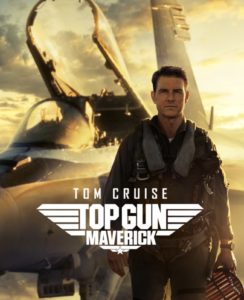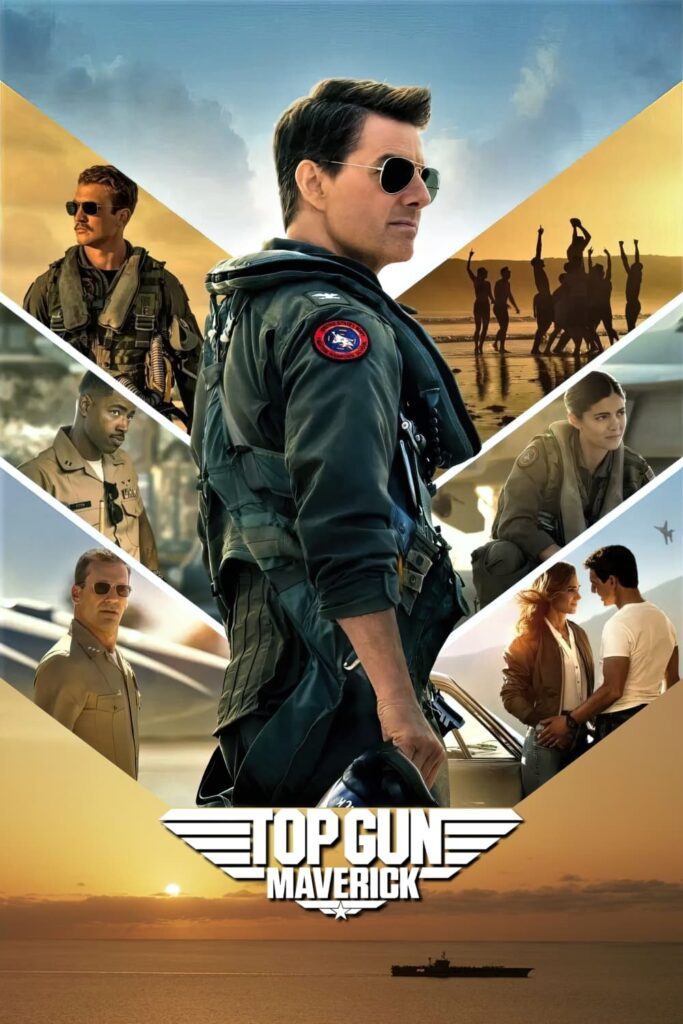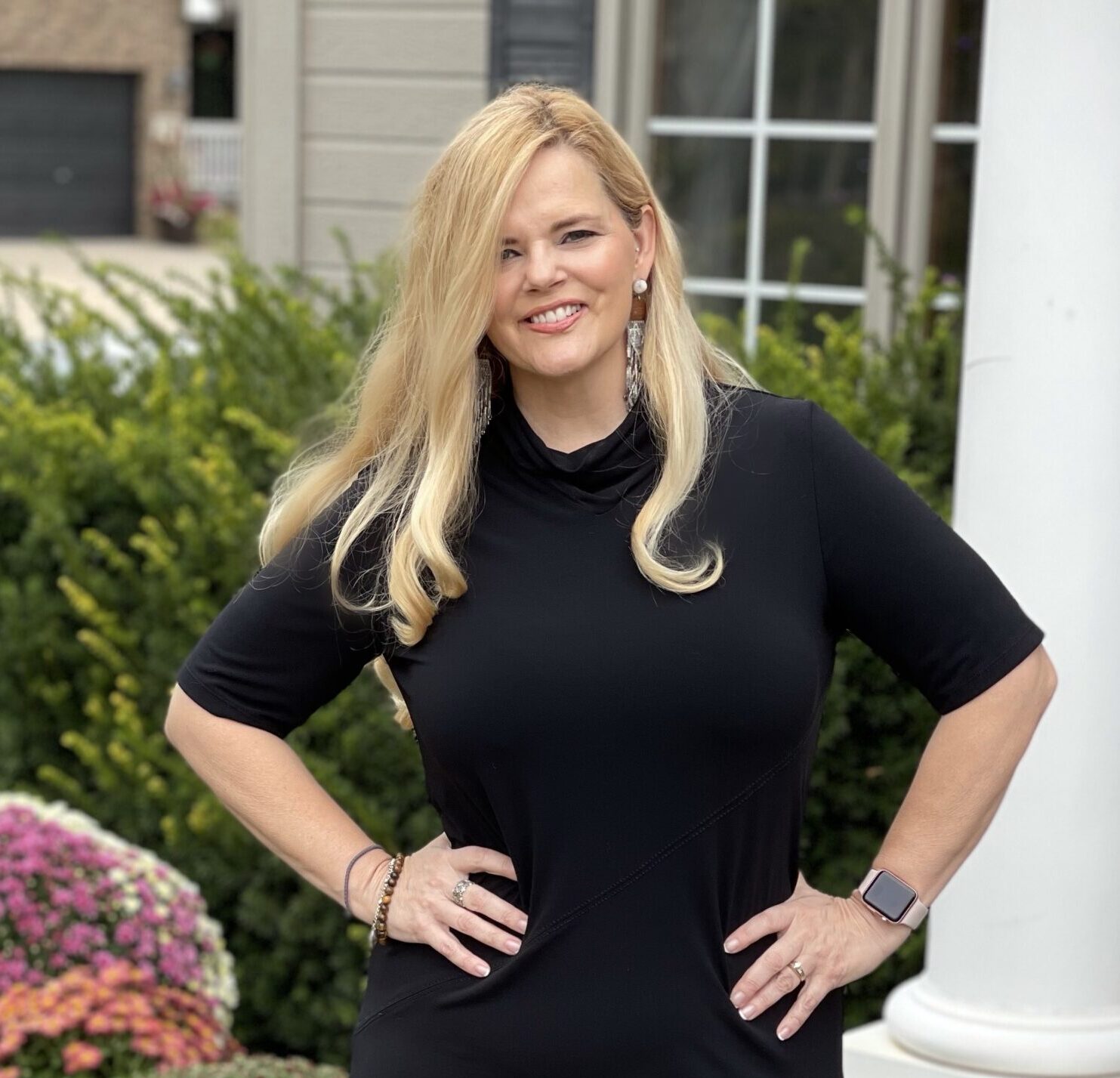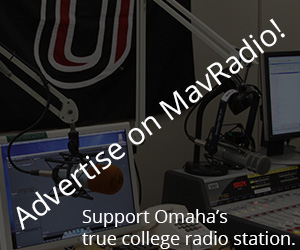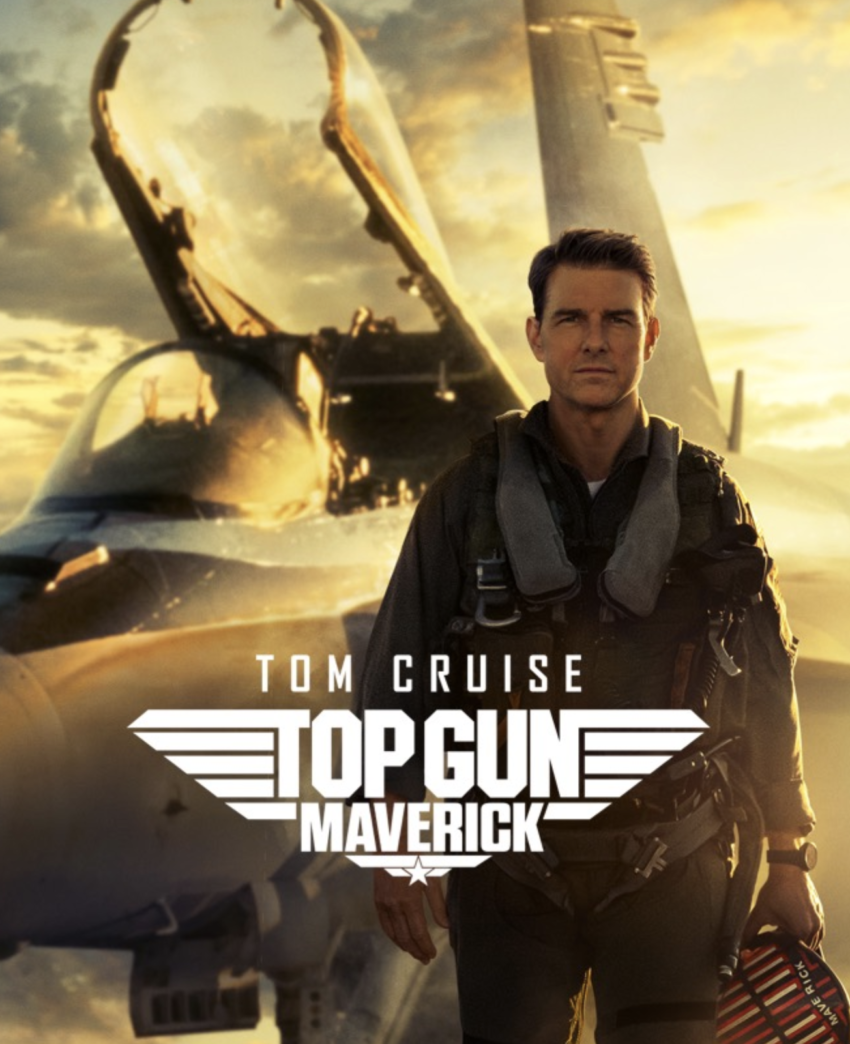
By Michael A.C., MavRadio.FM
Top Gun: Maverick enters the summer blockbuster race after several delays. The sequel, 36 years after the 1986 blockbuster, completes the story arc of fighter pilot Pete “Maverick” Mitchell. However, it forgets a vital line in the first movie: “There’s no points for second best”.
The call for a sequel to the highly successful Top Gun was instant upon release. The groundbreaking cinematography set the foundation for adrenaline-heavy, “fast and furious” vehicle chase scenes – with first-person perspective shots from the aircraft. Its memorable humor military jargon lines, as well as the vulgar locker room jokes are permanent in pop culture. The steamy romance between Maverick and Charlie became inspirational to cinematographers, borrowing its blue silhouette and synthesizer pad atmosphere in countless love scenes. Top Gun’s charismatic ensemble tells the rare story of competitive gladiators, without it being another film about a sports team. It’s soundtrack, also a massive hit on the pop charts, was a snapshot of 1980s coolness.
Top Gun: Maverick has the same elements as the original but in smaller doses – much smaller. This sequel introduces new generation of fighter pilots, as well as many references from the original. This is a story involving Maverick training his pilots for a mission, rather than the competition for the trophy in this first film. Maverick is the focus of the story, yet perhaps to the point where everything and everyone else are treated secondary.
Captain Pete “Maverick” Mitchell is still the best fighter pilot in the Navy, now a test pilot. Unfortunately, it is a poignant story rather than the inspirational tone of the original. The rebellious Maverick is still a rebel, even at the rank of Captain. Despite the implication of growth at the end of the original film, his immaturity is inherent. We discover his tenure as a Top Gun instructor lasted only two months. Maverick still hasn’t found love outside of his aviation. He has no family. He still carries guilt for Goose’s death in the first film. Rather than the stakes of an unnamed enemy, or the threat of other pilots in competition, the antagonist is a Navy that is eager to ground Maverick.
On paper, this is Tom Cruise’s Rocky Balboa, but with fighter planes. Only, we saw Rocky age gracefully, unlike Maverick who at last faces a lot of regret for years of hubris and self-absorption. What makes Top Gun: Maverick an eerie experience is how much a metaphor it is to Tom Cruise’s career. Once the biggest male celebrity of 1986, Cruise’s glory days are literally close to 40-years-ago. Most of the audience seeing Top Gun: Maverick were born almost 20 years after the original movie. Tom Cruise’s 60th birthday is on July 3rd of this year.
Paramount Pictures are resourceful to stock up on enough black hair dye, as Cruise’s hair is the only thing that links him to 1986. The story expects us to believe that Maverick’s soul is ageless, when no amount of makeup can cover the wrinkles, thanks to the clarity of the 4K resolution. When next to his peer co-stars Ed Harris, Val Kilmer, and Jennifer Connelly, there is a very unfair contrast. Cruise shows up to the proverbial high school reunion, still boasting of his rock star dreams, and with the same hubris of his varsity football days when he had all the right moves.
I was holding back laughter at the depictions of the Navy favoring drone aerial warfare over manned aircraft, simply because it is used as a dramatic motivation for Maverick’s antics. The trope of “computers are taking our jobs” comes off as a trope in a Mike Judge film about corporate downsizing. Because it took until the 2020s to produce a Top Gun sequel, I suppose it is the only route to pursue. Though the threat feels unconvincing, it reprised the Top Gun’s trope of monologues from the superior officers who reprimand Maverick for disobeying orders. Except those monologues feel routine where they were once memorable.
Jennifer Connelly brings a reference in first movie to life, playing the Admiral’s daughter, Penny Benjamin. When Penny and Maverick reunited their on-and-off romance with is established within moments – negating an explanation for Charlie Blackwood’s absence. What is unfortunate is Connelly is an actress of similar, if not greater caliber than Kelly McGillis. Connelly’s potential to provide gravitas to Maverick’s romantic life is much greater than the material she works with. The camera loves Connelly, but dramatic audiences love her as well. We get none of the acting chops of her reputation other than a few lines. This film relegates Jennifer Connelly to the same role she played in the Roy Orbison music video – eye candy. There is depth and emotion to her moments with Cruise, but those moments are not long enough.
Miles Teller plays Lt. Bradley “Rooster” Bradshaw, the son of Maverick’s former co-pilot, Goose. We see a glimpse of a personality and sense of humor that recall’s his late father. But a glimpse is all we get. We are introduced to Rooster as he plays the exact same Jerry Lee Lewis song on the piano that his father played. From that moment on we only see frustration and intensity from Rooster, as he reprises the same hotheaded pilot that constantly gets in his own way. Rooster is arguably Maverick Jr. as opposed to Goose’s son. They simply recycle the trope of the first film – the son trying to avenge the late father. The difference is, Maverick wishes to be a father figure to a rejecting Rooster, which in my opinion diminishes the strength of the Rooster character. Again, this is Maverick’s story, and it reduces Miles Teller to perform with one note.
The story introduces a new generation of fighter pilots in Hangman, Phoenix, Bob, Payback, and Fanboy. But the story does not grant us enough time to relate to them. Clearly this is a movie about Maverick, and everything else is either periphery or tertiary to his story arc – and for better or worse creates many missed opportunities with the cast.
However, at the core of the original film is the central theme that holds both films together: redemption. Maverick is out to prove that fighter pilots are still essential in the modern military. In a day and age when technology seems to advance beyond his usefulness, Maverick is fighting to prove that we still need “the best of the best”. Meanwhile, both Maverick and Rooster have their own emotional baggage to process when it comes to grieving Goose’s death.
Director Joseph Kosinsky provides a lot of fan service in this film, from a heartfelt reunion with Iceman to a surprise reunion with the retired F-14 Tomcat. Kosinsky is no stranger to reviving dormant franchises, as he was behind the lens for the excellent (and underrated) Tron Legacy. He is a fan of Top Gun and it shows, as he faithfully recaptures the dark silhouette environment of Fightertown U.S.A. Kosinsky masterfully brings us back to not only the time, but also the place that is Top Gun.
My biggest complaint about Top Gun: Maverick is the soundtrack. The original film had a soundtrack, although dated, is a time capsule that captured the cool and sexy aura of its characters. This offering gives us the most uninteresting, lifeless score from Hans Zimmer to date. It pains me to say that, as Zimmer is the most revered film composer of our time. But compared to Harold Faltermeyer’s iconic anthem, there was nothing memorable about Zimmer’s score. Faltermeyer increased the value of every single moment with every note in Top Gun. Even with my all-time favorite guitarist, Johnny Marr, playing the “Top Gun Anthem”, it is the greatest disappointment of the entire film. There was no equivalent to a “Danger Zone” from Kenny Loggins or “Mighty Wings” from Cheap Trick. I want to like it but there is nothing compelling about the music.
To make matters worse, the intended hit single is an over-manufactured, contrived Lady Gaga song. It is an unfortunate statement to make, as she was clicking on all cylinders for A Star Is Born. “Hold My Hand” is a paint-by-number power ballad no different from any other power ballad in movie history. It will likely chart in the Hot 100. But it will never hold a candle to Berlin’s Academy Award winning “Take My Breath Away”. Gaga hits those notes, but they become dead weight faster than Celine Dion on a sinking ship.
Despite its flaws, Top Gun: Maverick delivers exactly what it promises. This is a movie that exists to complete the story arc of Maverick. And as the story comes to its end you get the feeling that Maverick has indeed come full circle. Sadly, it may hinder any hope of a third film, as Maverick doesn’t have many adventures left and all the other characters were underdeveloped. Still, one can argue it needed to be this way. Maverick is arguably the character most synonymous with Tom Cruise. And Maverick is the central character to Top Gun. You cannot have a Top Gun sequel without Maverick.
Those looking forward to the flying sequences will not be disappointed. You will find yourself asking which shots were actual cinematography, and which shots were sweetened with CGI. Let’s face it, it’s 2022, and everyone in film uses CGI. One will wonder is to what extent it is used. We know for a fact that the cast were indeed trained to fly. And the images do not disappoint in the least. Because the stakes are not as intense in this sequel, I didn’t find myself on the edge of my seat this time around. And there is arguably some Mission Impossible style shenanigans, which I am still unsure if it belongs in the movie. But Top Gun: Maverick spared no expense when filming the aircraft dogfight scenes.
Top Gun: Maverick is not a bad film. In fact, it is what people want in a summer blockbuster. You have action, drama, romance, special effects, and some very attractive movie stars on screen. Many people will see it and enjoy it. It is also what you expect from a sequel – it will never be as iconic as the first film.
Maybe I am being harsh by judging it so closely to the first movie. I appreciate the fact that it recognizes its own legacy – down to the inclusion of the late Don Simpson and the late Tony Scott in its opening credits. I applaud the effort of bringing us back to the world of Top Gun with so much attention to detail. But this is another sequel to an 80s film, like the Ghostbusters franchise, whose release is so late that it obviously dates the product. Perhaps it could’ve been more welcome ten or twenty years ago, and possibly a more convincing product.
Unfortunately, time has moved on since 1986. Moviegoers are happy to see Maverick again, and for good reason. But when the nostalgia wears off it will be nothing more than just a sequel. Therefore, I have the dubious responsibility to measure Top Gun: Maverick in the same manner of the first film, “there’s no points for second best”.
Michael A.C. hosts the indie rock show SUBZ3R0 on Sunday Nights, exclusively on MavRadio


